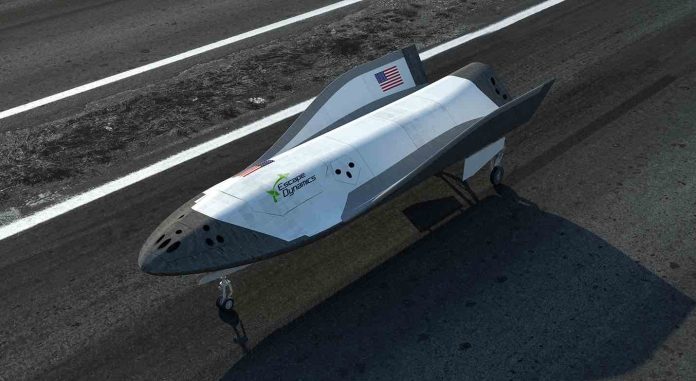The quest for cheap access to space, to make space travel as inexpensive as air travel, has eluded engineers, government policy makers, and business entrepreneurs from before the beginning of the space age. It has become axiomatic, almost to the point of being a cliché, that the true space age will not begin until launch costs come down significantly. Forbes reported on Friday about a company called Escape Dynamics that has a unique approach to the problem. The company proposes to launch payloads into low Earth orbit on beams of microwaves.
The idea of “beam ships” have been around for decades. In its purest form, the concept involves firing a laser at the stern of the spaceship, super heating the air beneath it, causing thrust, lifting the said vehicle into space. The advantage is that the spacecraft does not have to be launched by a huge rocket with a lot of propellant to add mass. Some versions of the concept involves the laser igniting propellant at the stern or bottom of the spacecraft.
The Escape Dynamics concept uses microwave energy instead of lasers.
“It aims to use a giant set of batteries to draw power from the regular electric grid (or on site solar panels, wind turbines, or other available power generation). Once they’re charged and a spaceship is ready to go, power will be sent to a set of modular, phased array microwave antennae spanning a square kilometer. Those antennae will then fire a microwave beam at a heat exchanger on the spaceship. That heat exchanger will heat up the hydrogen in the fuel tank, which is what powers the rocket on the ship into orbit.”
The concept avoids the use of rocket engines, which are fueled by liquid hydrogen or some other propellant and liquid oxygen. The spacecraft, carrying only hydrogen fuel, is lighter and can achieve orbit much cheaper than one propelled by a conventional rocket.
The Escape Dynamics concept has been proven in laboratory experiments. The next step is to test the microwave generator in the open air. After that, aerial drones will be flown powered by microwaves.
The first suborbital flight, envisioned for the 2020s, will take $200 million in research and development funding. Scaling the system up to launch payloads into orbit will take a cool $1 billion. But, if the company is right, it may be on the way toward rendering conventional rocket ships obsolete.















